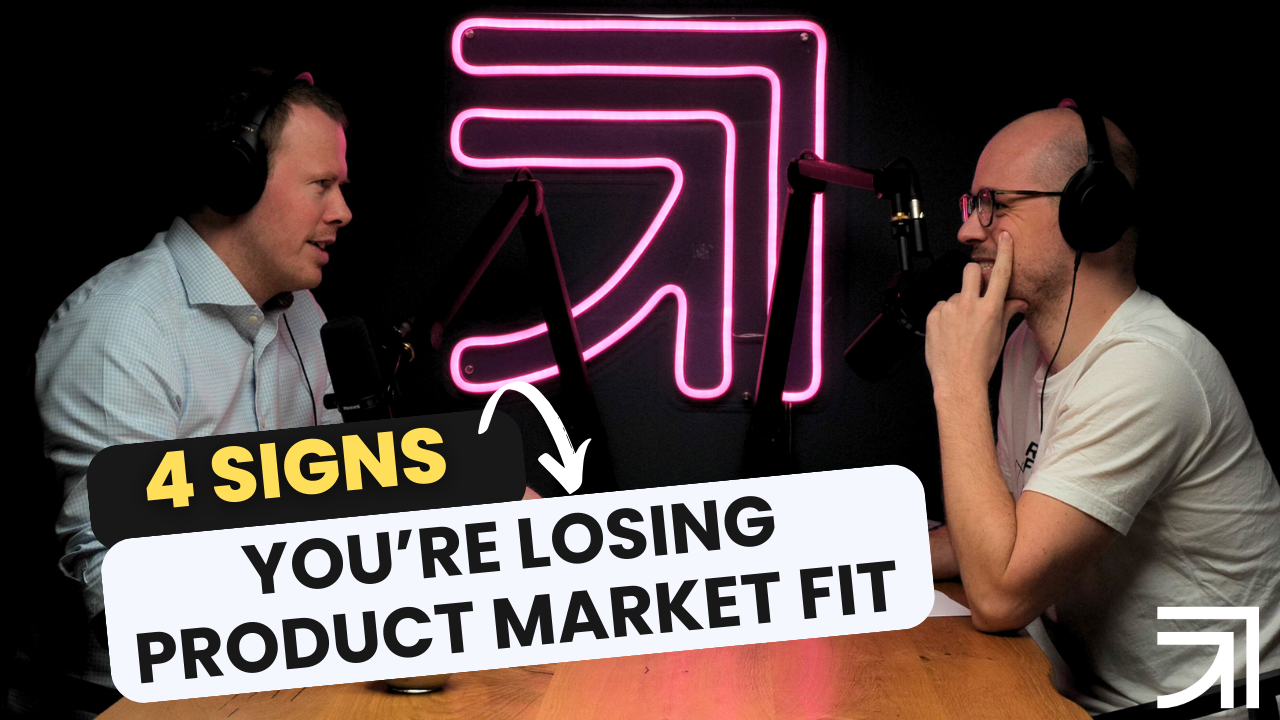
Are you losing product market fit?
Business longevity hinges on maintaining a strong Product-Market Fit (PMF). While achieving PMF is a significant milestone, sustaining it is a continuous process. Over time, a business may unwittingly lose this fit due to evolving markets, changing consumer behaviors, or the emergence of new competition.
In this episode we discuss the different signs that a PMF might be slipping away, and how you can tackle these issues proactively.
Changes in Utility and Ease of Use:
A major sign of disappearing PMF is when the ease of use or utility of your product is getting redefined. As Toni puts it, “Things change. You have to watch out for those signs. You have to look at what is moving in the market” (28:30). An example they discuss is HipChat, which was overtaken by Slack simply because Slack’s product was easier, more convenient, and visually appealing, which was more in line with what users were seeking.
Changes in Behaviour:
The second sign they delve into is changing buyer behavior. This could be spurred by new innovation or external changes. A striking example discussed is Blockbuster’s downfall, which was accelerated by changing consumer habits towards on-demand, online consumption rather than physically visiting stores to rent movies. Toni remarks, “There is an expectation that has changed, mostly due to convenience and technology enabling that convenience.”
Changes in Willingness to Pay:
The third dimension of PMF erosion revolves around the willingness to pay. This may stem from a drop in the perceived utility of the product (or service) while its price remains the same or increases. Take storage on iPhones, it was an incredibly profitable upsell for Apple. However, with the introduction of cloud technology, consumers got a higher utility product (virtually limitless storage), at a lesser price, completely disrupting that aspect of the iPhone’s appeal. Mikkel states, “They increased utility and decreased price at the same time… Without making you feel like you have less storage on your phone”.
Conclusion:
The process of keeping the PMF is an evolving one. Being alert to these signs and leaning into them rather than shying away is crucial for the sustainability of a business. As Toni cautions, “Don’t get married to having the PMF check mark. It might be fading away, and that’s okay… And attack that conversation because that’s just the laws and physics of how the market works.”
Companies must consistently scan their environment, ensuring they meet their customer’s evolving needs and preferences while maintaining strong market competitiveness. The market is continuously shifting, and so should business strategies. By keeping a finger firmly on the pulse of the market, businesses can proactively identify and respond to threats to their PMF, thereby staying ahead of the curve.

